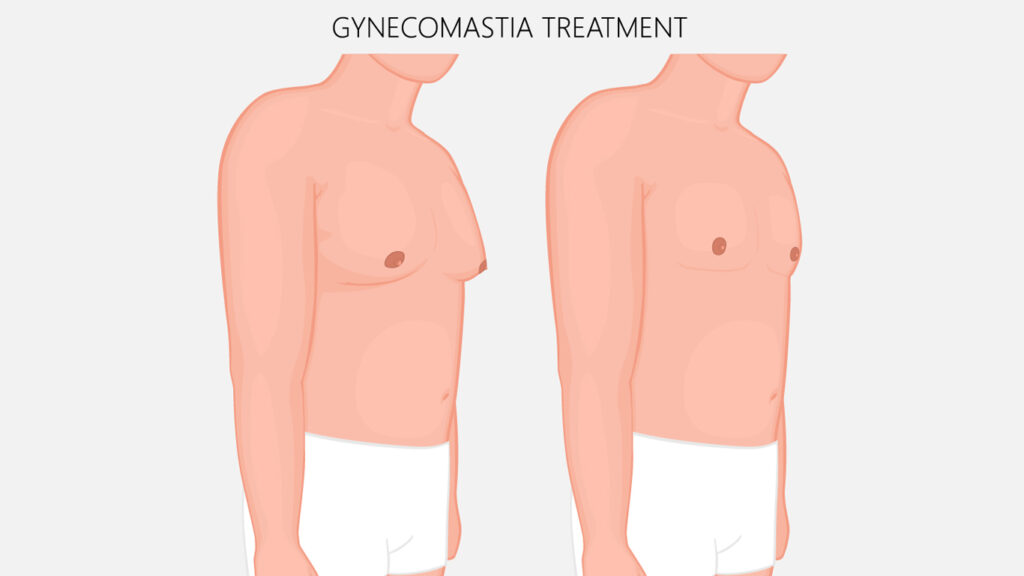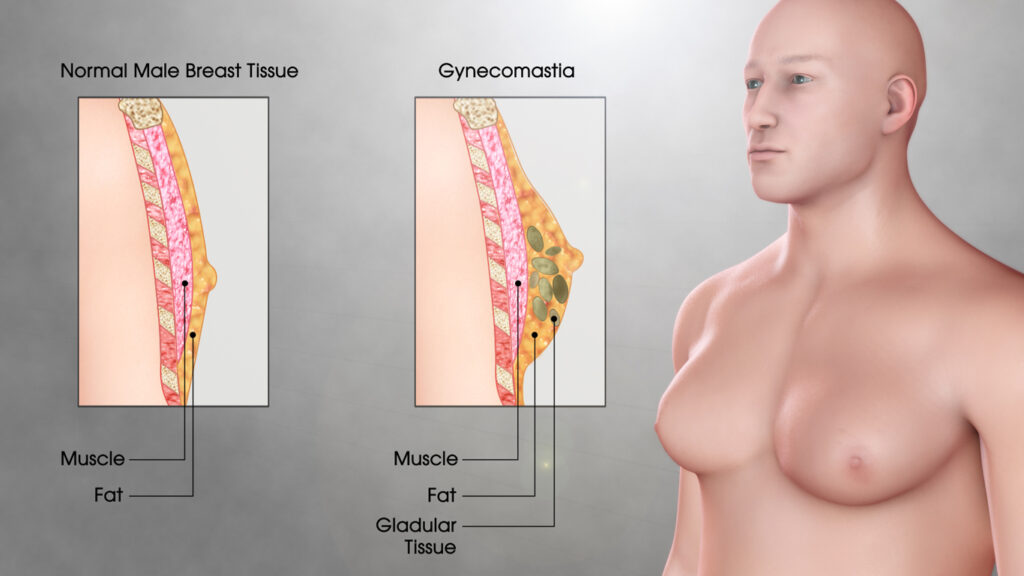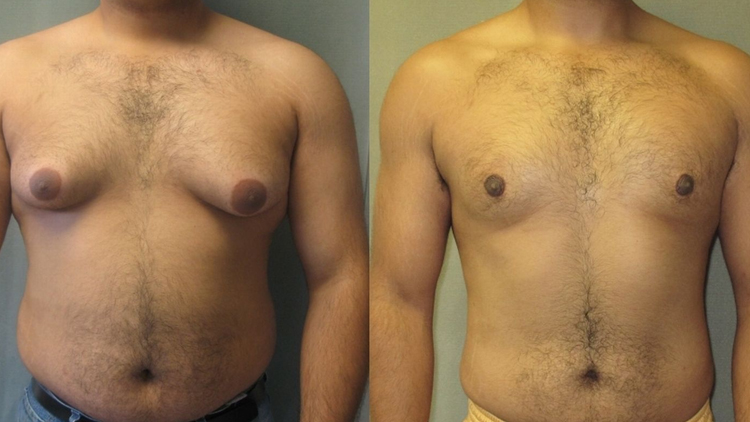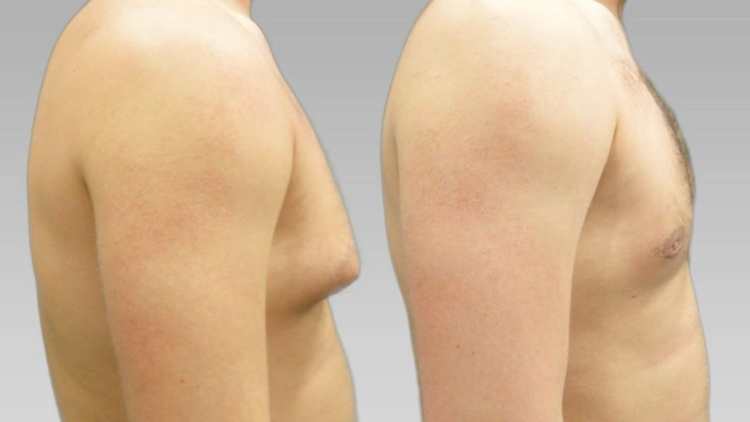Gynecomastia
Gynecomastia is typically caused by an imbalance in the hormones estrogen and testosterone. Estrogen is a female hormone, and although males also produce it in small amounts, an excess can lead to breast tissue growth. Various factors can disrupt the hormonal balance and contribute to gynecomastia

Reclaim Your Confidence Embrace Your Masculinity
Gynecomastia is a condition characterized by the enlargement of breast tissue in males. It results in the appearance of breasts that may resemble those seen in females. This condition can affect one or both breasts and can occur at any age, from infancy to adulthood. Here’s a brief explanation of gynecomastia, its causes, symptoms, and available treatment options
Gynecomastia is typically caused by an imbalance in the hormones estrogen and testosterone. Estrogen is a female hormone, and although males also produce it in small amounts, an excess can lead to breast tissue growth. Various factors can disrupt the hormonal balance and contribute to gynecomastia, including:
Causes
- Hormonal changes during puberty.
- Hormonal imbalances related to aging.
- Certain medical conditions, such as liver disease, kidney disease, or hormonal disorders.
- Use of certain medications, including anabolic steroids, anti-androgens, and some medications used in the treatment of prostate cancer.
- Substance abuse, including alcohol, marijuana, and some illegal drugs.

Symptoms of Gynecomastia
The main symptom of gynecomastia is the enlargement of breast tissue in males. The breasts may feel tender or sensitive. Gynecomastia is usually painless, but some individuals may experience discomfort or pain in the breasts. It’s important to note that gynecomastia is different from pseudogynecomastia, which refers to the accumulation of fat in the breast area without glandular tissue enlargement.
Treatment Options for Gynecomastia
Observation: In some cases, gynecomastia may resolve on its own, especially if it occurs during puberty. Regular monitoring and observation may be recommended to ensure there are no significant changes or complications.
Medications: In certain instances, medications may be prescribed to treat gynecomastia. These medications work by either reducing estrogen levels or increasing testosterone levels. However, medication effectiveness varies, and they may not be suitable for all individuals.
Surgery: Surgical intervention is often considered for individuals with persistent or severe gynecomastia. The two main surgical procedures for gynecomastia are:
Liposuction: Liposuction is used to remove excess fat from the breast area. It is most effective when gynecomastia is primarily caused by excess fatty tissue.
Mastectomy: Mastectomy involves the surgical removal of glandular breast tissue. It is typically recommended when there is a significant amount of glandular tissue present.
In some cases, a combination of liposuction and mastectomy may be performed to achieve optimal results. Surgery for gynecomastia is generally safe and can provide long-lasting improvements in breast appearance.
It’s important to consult with a qualified healthcare professional or a plastic surgeon who specializes in gynecomastia to evaluate the condition, discuss the underlying causes, and determine the most appropriate treatment option based on individual circumstances and preferences.
Gynecomastia Results



